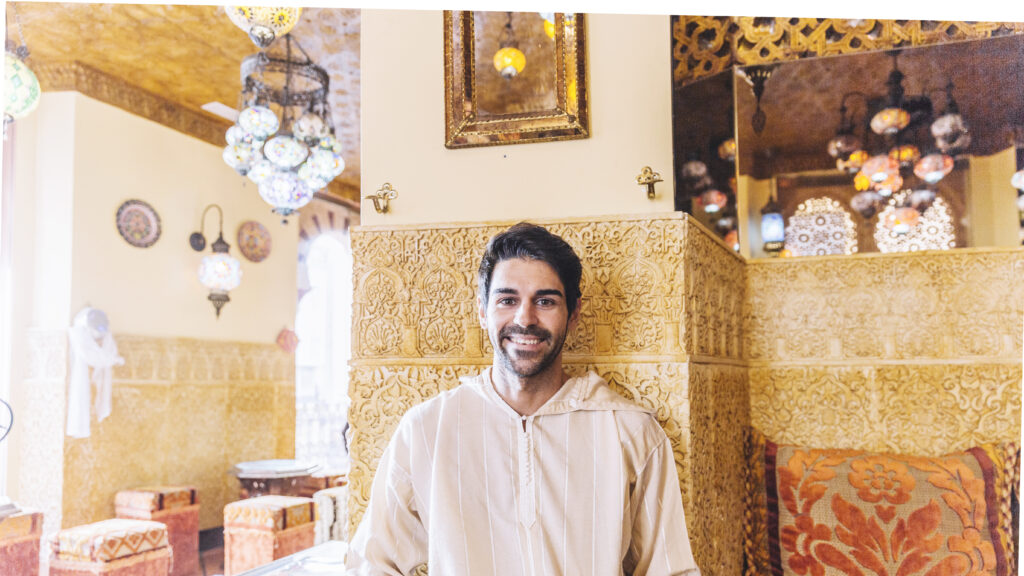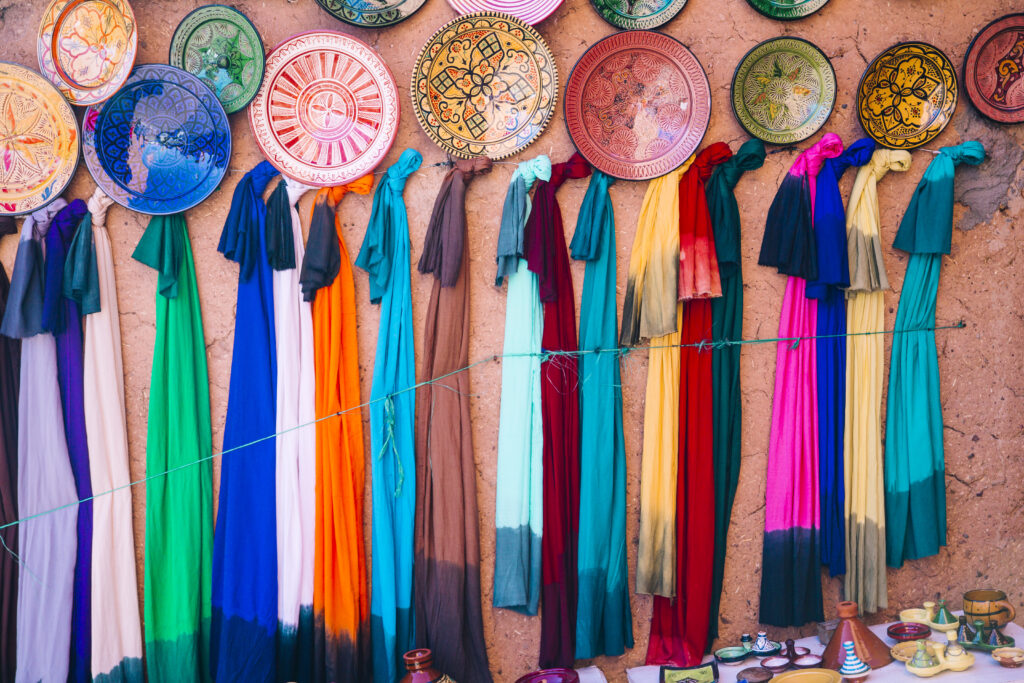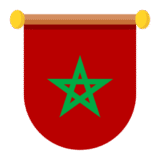Discover the Beauty of Traditional Moroccan Clothing in 2025
Morocco’s cultural landscape is vividly reflected in its diverse clothing, with each garment telling a story steeped in history and culture. From the vibrant markets of Marrakech to the ancient medinas of Fez, the country’s attire embodies a unique fusion of influences.
We will take you on a journey through the world of Moroccan garments, exploring their significance and the factors that have shaped their distinctive styles across different regions. Understanding these traditional clothes enhances your appreciation of Morocco’s heritage and provides deeper insights for your travel experience.
The Rich Heritage of Moroccan Attire
For centuries, Moroccan dress has been shaped by a multitude of cultural forces, creating a unique and captivating style. This rich heritage is reflected in the diverse garments that Moroccans wear, which are not just pieces of clothing but carriers of history and identity.
Historical Influences on Moroccan Attire
Moroccan traditional clothing has been influenced by various cultures, including Arab, Berber, and Mediterranean traditions. These influences have blended together over time, resulting in distinctive patterns and designs that are characteristic of Moroccan dress. The intricate embroidery, vibrant colours, and complex textures all tell a story of cultural exchange and historical depth.
Symbolism and Identity
The traditional clothing in Morocco is more than just aesthetically pleasing; it is also imbued with symbolic meanings. Different garments and patterns can signify marital status, age, and social standing, making clothing a vital aspect of personal and communal identity. We will explore how these symbols are used in various contexts, from everyday life to special occasions.
Traditional Moroccan Clothing for Women
We explore the traditional clothing worn by Moroccan women, which is steeped in history and cultural significance. Moroccan women’s attire is not just about aesthetics; it’s also deeply rooted in cultural identity and heritage.
The Elegant Kaftan
The Kaftan is a quintessential garment in Moroccan women’s traditional clothing. It’s a long, flowing tunic, often worn on special occasions. The Kaftan’s elegance lies in its simplicity and the intricate details that adorn it, such as embroidery and sequins. Moroccan women appreciate the Kaftan for its comfort and versatility, making it a staple in their wardrobes.
Takchita: The Two-Piece Ceremonial Dress
Takchita is a traditional two-piece dress worn by Moroccan women on ceremonial occasions, particularly weddings. It’s known for its vibrant colours and elaborate designs. The Takchita is a symbol of Moroccan craftsmanship, with each piece being a masterpiece of textile art. The dress is typically layered, with multiple pieces worn together to create a stunning visual effect.
Everyday Djellaba for Women
The Djellaba is the most commonly worn traditional garment by Moroccan women today. It’s a practical and versatile piece of clothing, suitable for daily activities such as running errands, shopping, or visiting friends. The women’s Djellaba is distinguished by its decorative elements, vibrant colours, and feminine silhouettes, making it a favourite among Moroccan women of all ages. The Djellaba’s fabric, design, and colour vary according to the season, ensuring it’s suitable for different weather conditions.
In summary, traditional Moroccan clothing for women is a rich tapestry of cultural heritage, elegance, and practicality. From the elegant Kaftan to the ceremonial Takchita and the everyday Djellaba, each garment tells a story of Morocco’s history and identity.
Traditional Moroccan Clothing for Men

Traditional Moroccan men’s clothing is characterised by its unique blend of comfort, practicality, and cultural significance. It’s a reflection of Morocco’s rich heritage and the various influences it has absorbed over the centuries.
The Versatile Djellaba
The djellaba is a staple in Moroccan men’s clothing, known for its versatility and comfort. It’s a long, hooded garment that is worn for both casual and formal occasions. The djellaba can be made from a variety of materials, ranging from simple cotton for everyday wear to more luxurious fabrics for special events.
Jabador: The Three-Piece Ensemble
The Jabador is a traditional three-piece ensemble consisting of a long tunic, trousers, and a headscarf or turban. It’s a garment that reflects the cultural and historical depth of Moroccan attire, often worn during special occasions and ceremonies.
Gandoura and Qandrissi Trousers
For warmer weather, Moroccan men often wear the Gandoura, a lightweight, short-sleeved garment that is both comfortable and stylish. It’s typically worn in simple, neutral colors that reflect the practicality of the garment. Alongside the Gandoura, pants known as Qandrissi trousers are worn. These sleeves-less garments are complemented by loose-fitting, baggy trousers that have gained international recognition through cultural references like Disney’s Aladdin.
- Discover the comfort and practicality of the Gandoura, a summer garment with sleeves that keeps men cool while maintaining traditional styles.
- Learn about the historical influences behind Qandrissi trousers and their adaptation into Moroccan men’s clothing, highlighting the cultural exchange and unique styles that have evolved.
- Understand how these garments are worn men in Morocco, reflecting both cultural identity and practical needs.
Essential Moroccan Accessories
Moroccan accessories are a vital part of the country’s rich cultural heritage, reflecting the artisanal skill and attention to detail that has been passed down through generations. These accessories not only add a touch of luxury to any ensemble but also reflect the country’s history and cultural identity.
Headwear: Tarbouche and Turbans
Traditional Moroccan headwear includes the Tarbouche, a felt hat often worn by men, and turbans, which are long pieces of cloth wrapped around the head. These styles of headwear are not only functional but also symbolic, reflecting the wearer’s social status and cultural affiliation.
Babouche: Traditional Moroccan Slippers
Babouches are traditional Moroccan slippers made from leather, often intricately embroidered or adorned with decorative elements. They are a staple in Moroccan footwear, providing comfort and elegance to both men and women.
Jewellery and Embellishments
Moroccan jewellery is renowned for its intricate designs and use of silver, amber, coral, and semi-precious stones. These pieces are not only beautiful but also carry cultural significance, particularly for women in traditional communities, serving as portable wealth and protection. Embellishments such as sequins, beads, and silk thread embroidery add texture and visual interest to traditional Moroccan clothing, reflecting various regional styles.
| Accessory | Description | Cultural Significance |
|---|---|---|
| Tarbouche | Felt hat worn by men | Symbolic, reflects social status |
| Turbans | Long pieces of cloth wrapped around the head | Cultural affiliation, social status |
| Babouches | Leather slippers, often embroidered | Comfort, elegance, traditional footwear |
The Artistry of Moroccan Embroidery
In Morocco, embroidery is not just a craft but a language of its own, telling stories through intricate patterns and vibrant colours. This traditional art form is a testament to the country’s rich cultural heritage, reflecting its diverse influences and traditions.
Regional Embroidery Styles
Moroccan embroidery is characterised by a variety of regional styles, each with its unique techniques and motifs. The Berchman, or thread work, is a complex embroidery motif often crafted with metallic threads, typically used to adorn sleeves, collars, or other parts of clothing. In different regions, the choice of colours and patterns can signify different cultural associations and symbolic meanings.
For instance, the use of blue in Berber communities is attributed with protective power, while purple and gold are associated with royal influences in court-influenced styles.
Symbolic Patterns and Motifs
The embroidery on traditional Moroccan clothing, such as the Takchita, is not merely decorative; it carries deep symbolic meanings. Geometric patterns often reflect Islamic artistic traditions, emphasising symmetry and abstract representation of natural forms. Natural elements like flowers, trees, and birds are stylised in embroidery, each carrying specific cultural associations.
- Geometric patterns symbolise harmony and balance.
- Floral motifs represent fertility and prosperity.
- Birds are often associated with freedom and spiritual growth.
These symbolic patterns connect wearers to their cultural heritage, with some motifs dating back centuries.
Fabrics and Materials in Traditional Moroccan Garments
The foundation of Moroccan attire is built upon a variety of fabrics and materials, each chosen for its unique qualities and aesthetic appeal. Traditional Moroccan clothing is known for its rich textures and vibrant colours.
Silk, Cotton, and Wool: The Foundation Fabrics
Moroccan garments often utilise wool, cotton, and silk. Wool is particularly valued for its warmth and durability, making it ideal for colder climates. Cotton is a popular choice for everyday wear due to its comfort and breathability. Silk, with its luxurious feel, is reserved for special occasions and ceremonial attire.
Decorative Elements: Gold Thread and Sequins
The beauty of Moroccan garments is further enhanced by decorative elements such as skalli thread and sequins. Skalli, a gold or silver thread, is used to create intricate embroidery, adding a touch of elegance to caftans and other traditional clothing. Sequins and other embellishments are meticulously applied to create dazzling patterns, often adorning the sleeves and hems of these exquisite garments.
Regional Variations in Moroccan Dress
From the Sahara Desert to the Atlas Mountains, regional variations in Moroccan dress reflect the country’s diverse environmental and cultural landscapes. As we explore these variations, we gain insight into how different communities have developed unique clothing traditions that not only reflect their cultural identity but also provide practical protection against their local environments.
Northern vs. Southern Styles
The northern regions of Morocco tend to have clothing styles influenced by Mediterranean and European cultures, while the southern regions are more closely tied to sub-Saharan African and Arab traditions. This is reflected in the fabrics, colours, and designs used in their traditional attire.
Coastal Fashion Influences
Coastal regions in Morocco have clothing styles that are often more cosmopolitan, influenced by historical trade and cultural exchange with other Mediterranean countries. These influences can be seen in the lighter fabrics and more varied colour palettes used in coastal communities.
Desert and Mountain Attire
In the vast desert landscapes, traditional attire is designed for protection from the harsh environment. For instance, the Tuareg people’s indigo-dyed clothing serves both practical and cultural purposes, shielding them from the intense heat and sand. In contrast, the heavy wool djellabas and burnouses of the Atlas Mountains are designed to protect against cold temperatures and snow, often featuring distinctive striped patterns that identify specific tribal affiliations. Desert dwellers have also developed ingenious clothing solutions like the cheche, a long scarf that can be wrapped in multiple ways to protect against sandstorms.
Ceremonial and Everyday Clothing

Moroccan clothing is a vibrant reflection of the country’s rich cultural heritage, evident in both ceremonial and everyday attire. Traditional garments continue to play a significant role in the daily lives of Moroccans, as well as in special occasions.
Wedding Attire and Celebrations
The Moroccan Caftan is a quintessential part of wedding celebrations, worn by women with pride. This long, flowy dress is adorned with intricate embroidery and sequins, making it a true masterpiece of Moroccan craftsmanship. The Caftan’s significance extends beyond its beauty, as it symbolizes cultural identity and heritage, particularly for women on their wedding day.
Practical Everyday Wear
In today‘s Morocco, traditional clothing remains a staple, especially in rural areas. The Djellaba, a long, hooded garment, is a popular choice for everyday wear due to its comfort and modesty. Moroccans blend traditional style with modern practicality, often mixing traditional pieces with Western attire. This blend is particularly evident in urban areas, where clothes with a modern twist are increasingly popular.
Modern Adaptations of Traditional Moroccan Clothing
The fusion of traditional Moroccan clothing with modern fashion sensibilities is creating a unique and captivating style that is gaining international recognition. As a result, traditional Moroccan garments are being reimagined for the contemporary wardrobe.
Global Fashion Influence
Today, traditional Moroccan clothing is a staple in many fashionable Western women’s closets, often purchased from trusted Moroccan artisanal shops. The annual Caftan fashion show in Morocco showcases the latest interpretations of traditional clothing, particularly the intricate Takchita. This event highlights the blend of heritage and modern style, appealing to a global audience.
Contemporary Moroccan Designers
We’re witnessing a resurgence of interest in traditional Moroccan clothing among the younger generation, who are embracing their cultural heritage. Contemporary Moroccan designers are at the forefront of this movement, reimagining classic garments for the modern era. By working with traditional artisans, these designers are not only preserving ancient techniques but also creating sustainable fashion ecosystems that support local communities.
Conclusion: Preserving Morocco’s Textile Heritage
Morocco’s traditional clothing is a living embodiment of its history and cultural identity. We believe that these garments hold significant cultural value, serving as a bridge to the past and a symbol of national identity.
The diverse textile heritage of the country is reflected in its traditional attire, with each region contributing its unique styles and techniques. By preserving and honouring traditional clothing, Morocco celebrates its cultural roots and fosters unity among its people.
We encourage you to explore the world of Moroccan textiles during your visit, perhaps bringing home a piece of this living heritage. By supporting artisans who create traditional Moroccan clothing, you play a role in preserving these important cultural traditions for future generations.
In doing so, you’ll not only enhance your appreciation of Moroccan culture but also contribute to the country’s rich cultural legacy.

